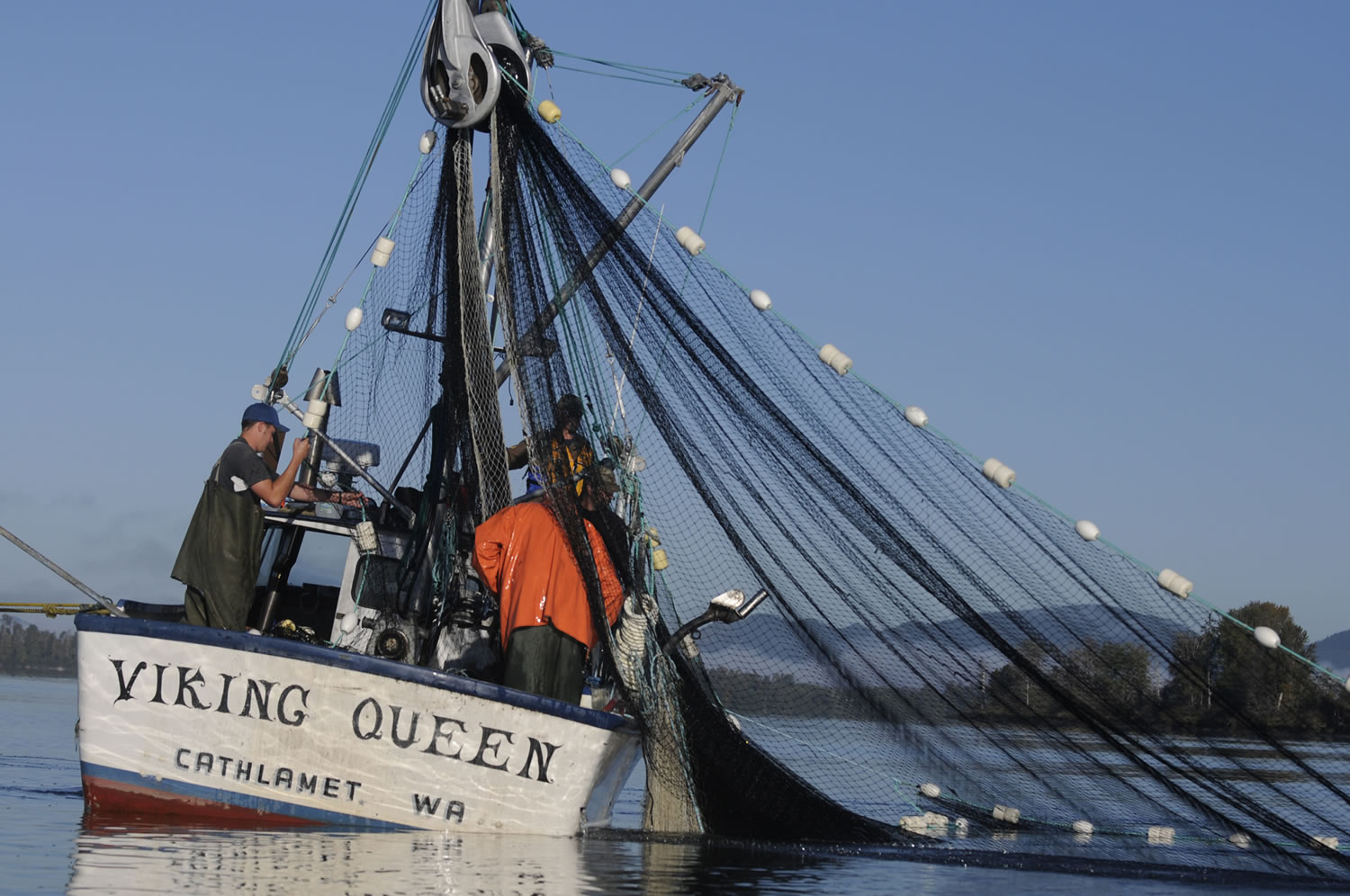Commercial salmon fishing with purse seines and beach seines — for profit not just testing — is coming to the lower Columbia River in the fall of 2014.
Washington and Oregon plan to allow a limited number of seines in 2014, 2015 and 2016, transitioning to the phase-out of gillnets from the main stem Columbia in 2017.
The Washington Department of Fish and Wildlife started the official process leading to commercial seining last week when it convened a meeting of an Emerging Fishery Advisory Board.
Washington law specifically requires a five-member advisory group to work with the agency in developing the details of new commercial fisheries.
Reforms jump-started by Oregon Gov. John Kitzhaber in mid-2012 and completed by the Washington and Oregon fish and wildlife commissions this year are bringing the most sweeping overhaul of lower Columbia River fisheries in 80 years.
The reforms allocate more chinook salmon to sportsmen in the main Columbia and restrict gillnetting to off-channel sites like Youngs Bay near Astoria or Deep River in Washington.
The states are enhancing the off-channel sites for gillnetting, with Washington attempting to develop a new site in the Cathlamet Channel between Puget Island and the mainland.
The reforms also require live-capture commercial fishing methods in the main Columbia — such as purse seines and beach seines — designed to harvest abundant hatchery stocks and release wild fish.
The seines have been tested under contract to the states for the past couple of years.
“The whole thing is coming,” said Ron Roler, Columbia River policy coordinator for the Washington Department of Fish and Wildlife. “We just need to plan for it make it the best we can.”
And there is a plethora of details still to iron out.
Just a few of those details include: how many initial beach seine permits and how any initial purse seine permits; what’s the maximum size of participating vessels; how long can the seines be in the water; how many feet can the seines be; how are the permits distributed between the two states; how are the permits distributed between sections of the lower Columbia; what criteria is used to choose among applicants, and will be their be landing limits?
Then there are questions such as can beach seiners be on private property or use the beaches at state parks.
Greg Johnson, an advisory board member from Vancouver, predicted conflicts between beach seines and bank sport fishermen.
“I’m not so sure sport fishermen would stand days three days a week,” said Darren Crookshanks, an advisory board member from Longview.
Closed sport-fishing days in the fall “could be an option,” said Guy Norman, regional director of the Washington Department of Fish and Wildlife.
The primary goal of the seining is to catch hatchery-origin tule (dark) chinook and early-stock coho to get those hatchery fish off the spawning grounds so they do not compete with threatened wild salmon.
That means the seining would be focused downstream of Woodland.
But the seining also has to catch enough “money fish,” primarily chinook headed for the upper Columbia, to make fishing profitable.
Tule chinook earn a commercial fisherman 50 cents a pound, while a bright chinook fetches $2 a pound.
Norman said the purse and beach seining fisheries in the lower Columbia are expected to evolve.
“There’s a number of things to learn here in the next few years,” he said.
Investing in the boats and equipment to purse seine can cost $15,000 to $20,000. That’s a big investment to make in an industry as risky as commercial fishing in the Columbia River.
“There’s most definitely a risk to be involved in it right way and a risk not to be involved in it right away,” Roler said.
The gillnet fleet is far from excited about the coming changes.
“I feel like I’m going to get lynched when I go to my commercial fishermen at home and try to explain this,” said Lance Gray, an advisory board member from Chinook.
“Listening to what’s been said in this room makes me sick,” said Bill Hunsinger, a Port of Astoria commission member.
He mentioned the plight of Snake River B-run steelhead, a run of just 10,700 this year and only 2,500 wild fish.
“You going to be running a bunch of steelhead through a seine fishery so the scales rub off and they die,” Hunsinger said.
Norman said commercial fishermen might want to form partnerships to reduce seining costs.
“Forcing to partner up doesn’t fit a lot of our people,” Johnson said.
Mike Backman, a commercial fisherman from Cathlamet, said a lottery is the only fair way to award a limited number of seine permits.
He also noted the 13 test beach seiners and eight test purse seiners got their gear paid for under their contracts.
Norman said the advisory board will meet again in late November. The agency plans to take its proposal to the state Fish and Wildlife Commission for adoption in January or February.
Additional details, such as the seines share of the overall commercial allocation, will be ironed out in the annual North of Falcon planning process for summer and fall fishing.
“It’s pretty apparent what’s coming,” said Crookshanks. “I’m 45 years old. I’m not ready to quit. If change is coming, I’ve got to change.”




